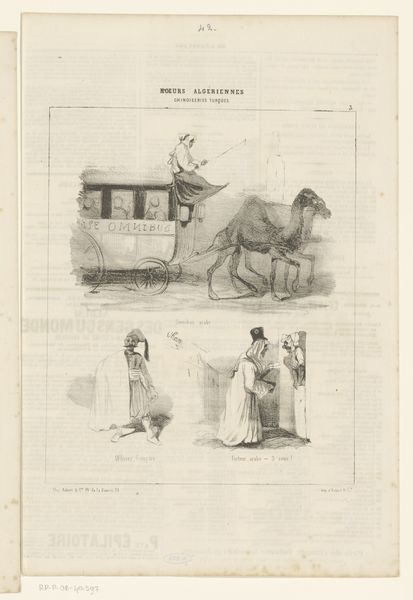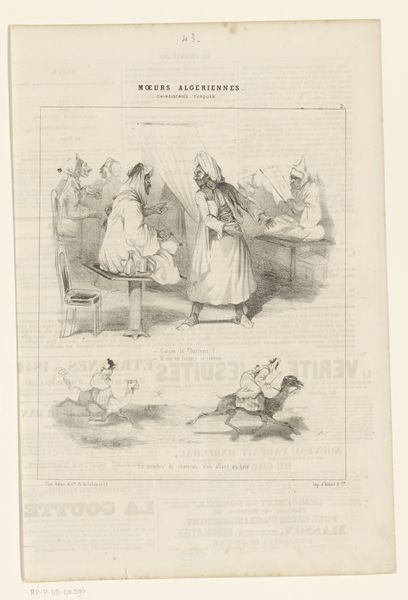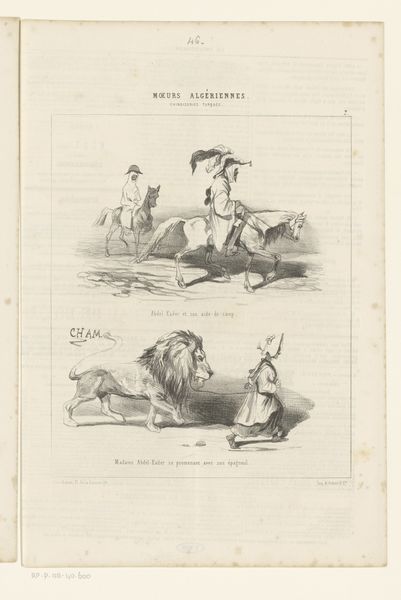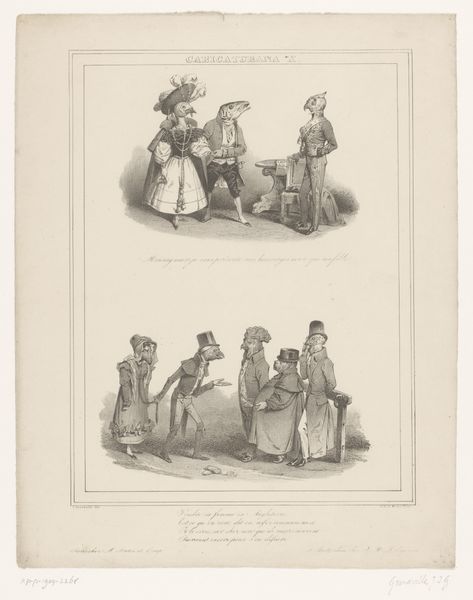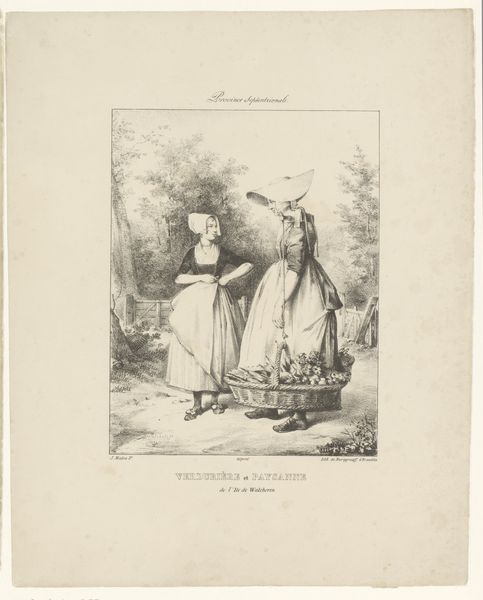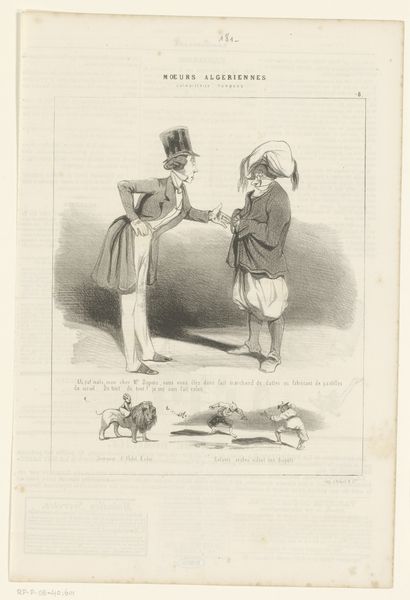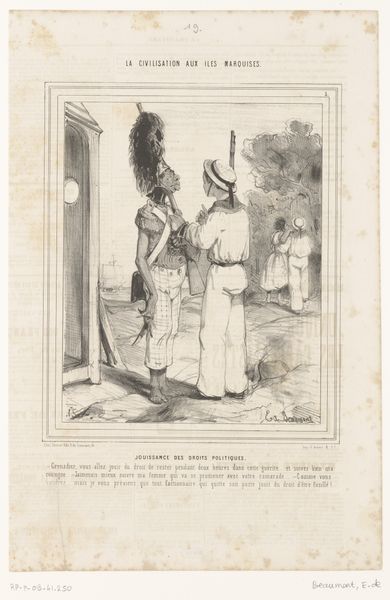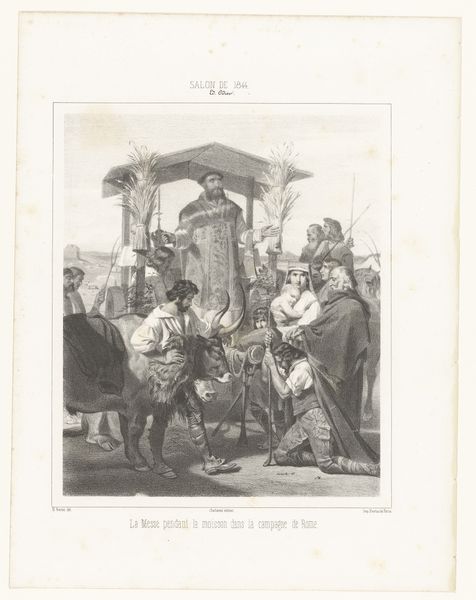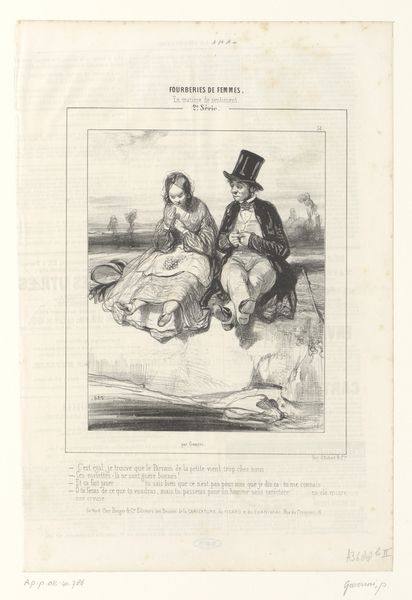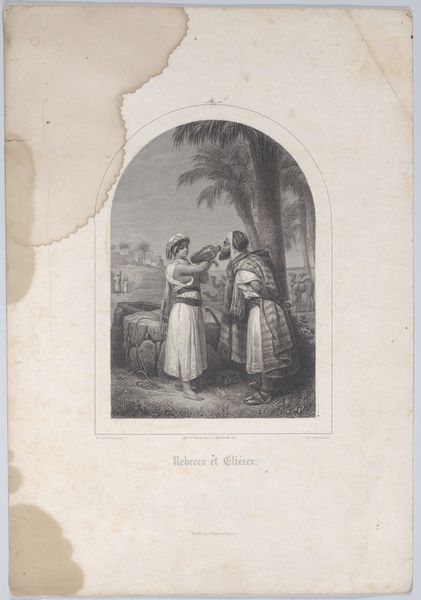
drawing, graphic-art, lithograph, print
#
drawing
#
graphic-art
#
lithograph
# print
#
caricature
#
orientalism
#
genre-painting
#
monochrome
Dimensions: height 364 mm, width 244 mm
Copyright: Rijks Museum: Open Domain
Curator: Looking at this monochrome lithograph from possibly 1843, created by Cham, we see a satirical take on Algerian life. It’s titled "Man spreekt vrouw aan op straat en wagen getrokken door kamelen." Editor: It immediately strikes me as rather harsh in its characterization. There's a palpable sense of judgment, almost mockery, in how the figures are depicted, particularly the pronounced noses and exaggerated features. It makes me wonder about the underlying colonial gaze at play here. Curator: Indeed, those visual cues contribute to a readily identifiable "othering," wouldn't you agree? It utilizes the Orientalist trope quite strongly. The exaggerated physical features link to a visual language that solidified stereotypes around people from the Middle East and North Africa. Editor: Precisely. The clothing and setting signal "exoticism," but filtered through a lens of presumed European superiority. Look at the scene below the figures—a wagon pulled by camels. It’s simultaneously intriguing and deeply problematic, reinforcing this skewed vision. Curator: Absolutely, and let’s remember that caricature serves a specific purpose—to amplify and distort perceived characteristics to make a point, or perhaps in this case, many points. What do you see reflected in this cultural mirror, so to speak? Editor: Well, I see echoes of ongoing power dynamics. The lithograph embodies the way visual culture has historically participated in constructing narratives about race and cultural difference. I wonder how audiences at the time would have understood these depictions and how much they contributed to legitimizing colonial practices. Curator: The continuity of certain caricatured features across different media and periods speaks to a persistent cultural memory, one that, as you've noted, often upholds asymmetric relationships. It prompts us to contemplate on the persistence and evolution of symbolic systems shaping perceptions of the Other. Editor: Examining this piece brings a renewed urgency to challenge and deconstruct the visual vocabularies that perpetuate stereotypes, reminding us how art both reflects and actively shapes our understandings of identity, politics, and history. Curator: An enduring reflection indeed! Thank you for sharing your important, contextual insights with me today.
Comments
No comments
Be the first to comment and join the conversation on the ultimate creative platform.
